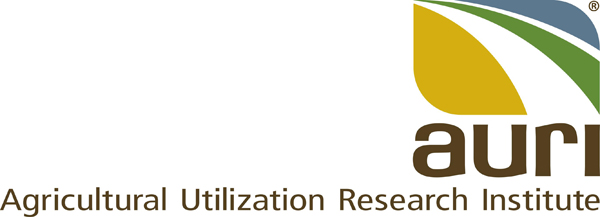New reports give insight that could propel opportunities in the ag and food industries in Minnesota
The Agricultural Utilization Research Institute’s (AURI) Agricultural Innovation Center, which is funded by the United States Department of Agriculture (USDA) Rural Development program, recently released new market spotlights that focus on 10 agricultural sectors with growth opportunities in Minnesota. Created for farmers, entrepreneurs, and businesses to understand the marketplace in order to generate new ideas and opportunities, these reports provide an outlook for each sector, including information about the total addressable market, supply and demand, and market channels – all designed to help propel value-added agriculture and new product development within the state.
“By sharing these reports, we hope producers will use them to inform their business plans or to spark innovation within their product offerings,” explains Sanchez Philocles, AURI market research analyst. “Understanding the current status and market potential of various emerging product markets is an important contribution to our ag and food industries in Minnesota to explore and identify new ways to evolve their business.”
Key findings in the market spotlights include:
- Goat Meat Market: Minnesota is one of the largest marketplaces for goat meat in the United States. The estimated market demand is $37 million per year, primarily based on the estimated consumption of the 76,000 Somali residents in Minnesota. There is market potential for halal goat meat in Minnesota, along with increased consumption of goat meat during Muslim and Christian holidays.
- Specialty Oilseed Market: The market for specialty oilseeds in Minnesota has flourished during the last decade in part due to the increased demand for livestock feed, vegetable oil, and industrial uses like biofuels. Specialty oilseed crops mostly go to oil processors, representing 58% of the market, with canola and sunflower gaining the most market share.
- Grass Seed Market: Minnesota is the second-largest producer of turf seed in the United States, with substantial growth in the last decade. Perennial ryegrass represents 90% of total grass seed production in Minnesota, and this number is likely to increase because of stable prices and economic opportunities for producers.
- Oats Market: Oats are Minnesota’s fifth most important crop in terms of the number of farms and acres harvested after corn, soybean, wheat, and alfalfa/hay. Oats production primarily comes from smaller producers with farm sizes of less than 500 acres. With the rise of distiller dry grains (DDGs) and other feed ingredients, fewer oats are used for feed, with more entering the food market.
- Compost Market: According to the Minnesota Composting Council, the compost industry generates and contributes $34 million in revenue to the Minnesota economy; however, more market research is needed to estimate Minnesota’s compost demand. Landscapers are the most significant market niche for compost and represent almost half of Minnesota’s market while the agriculture and golf course markets use limited quantities of compost.
- Small-Scale Dairy Processing: Dairy farmers could diversify their income and capture more of the food dollar by investing in small-scale, value-added dairy processing. Small dairy plants hold a minor share of the Minnesota milk market, representing 25% of all processing plants but contributing less than 2% of total milk production in the state. Small dairy processing plants sell their value-added products primarily to grocery stores and directly to consumers.
- Halal Meat: Minnesota, with its growing Muslim population, is an emerging market for halal meat. Halal refers to anything permissible under Islamic law.
This report focused on four animal protein categories: goat, beef, chicken, and lamb. While more market research is needed, there appear to be growth opportunities for halal meat in Minnesota. Satisfying local halal demand for the four meat categories will depend on slaughtering capacity at facilities allowed to perform ritual slaughter. Three facilities are currently processing halal meat in Minnesota. - Small and Artisan Grains Market: Small and artisan grains comprise less than 10% of the total field crops grown in Minnesota. Despite a lack of small and mid-scale processors, the production of rye, buckwheat, emmer, and spelt in Minnesota is increasing as more acres are harvested and bushels are produced.
- Wool Market: Wool production in Minnesota has steadily declined from 2013 to 2022, in large part due to the lack of market outlets and uses for raw wool, along with the low pounds of wool produced each year. The five fabric mills manufacturing wool in Minnesota do not source their wool from local producers, so many local producers sell raw wool to yarn shops. The approximately 60 yarn shops in Minnesota have the potential to use 180,000 pounds of raw wool annually.
- Industrial Hemp Market: The industrial hemp market in Minnesota is in its infancy, with high production volatility; however, the market is starting to show signs of future potential. Production is expected to stabilize due to improved varieties, additional processing facilities, end-use market development, and enhanced crop insurance products.
“We hope the market insights in these reports help provide a base to support the launch of a producer’s next business idea,” Sanchez says.
Find a list of all the reports in the market spotlight series on AURI’s website.
ABOUT AURI
The Agricultural Utilization Research Institute is a nonprofit whose mission is to accelerate the expansion of the agricultural economy by empowering expanded uses and markets of agriculturally derived products. It accomplishes this by using science and technology to help develop new uses for agricultural products. It collaborates globally, acts regionally, and is known as an economic catalyst for Minnesota with a focus on bioindustrial products and food. AURI provides a broad range of services, including applied research and development, scientific assistance, and a targeted network across the value chain to foster collaboration. To learn more, visit auri.org.
